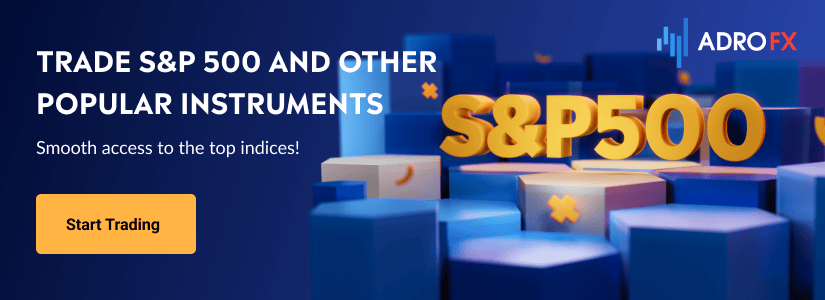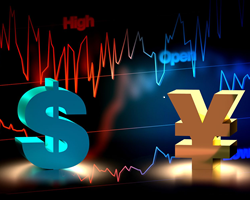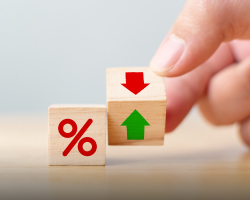Exchange Traded Funds (ETF) - Meaning, Types, Benefits
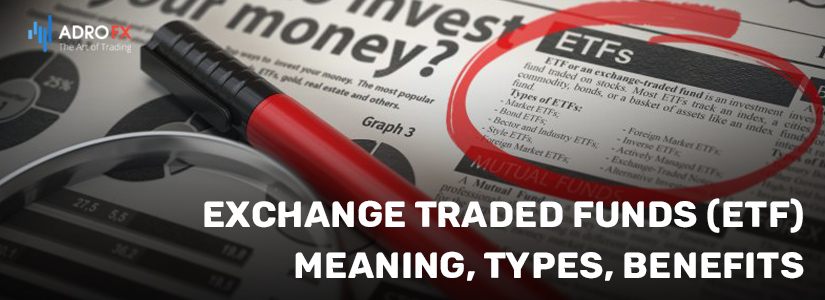
ETF funds may become a good alternative to stocks for those who have just turned their attention to earning on the stock market. We have decided to find out what ETFs are worth choosing, how much can be earned from them, and what are the pros and cons of these investments.
What Is an ETF?
To assemble a portfolio of various securities, the average investor may need a lot of funds. Because many stocks are interesting to invest in, but they are quite expensive.
For example, one share of Class A stock in billionaire Warren Buffett's Berkshire Hathaway investment company costs $476,500 apiece. One share of Swiss chocolate maker Lindt is $109,400. A share of travel and hotel booking aggregator Booking Holdings can be bought for $2,572.
What to do if you do not have enough capital, but want to invest in promising companies? In this situation, an investment fund can be very helpful. It accumulates capital from a large number of private investors. A management company buys various stocks or other assets for the funds raised in the fund. In this way, it forms and manages a proper investment portfolio.
When an investor buys a stock or share of a fund, they put their capital all at once into all securities or assets held by the fund.
ETFs (short for Exchange Traded Fund) are funds whose shares can be bought and sold on the stock exchange. Such a fund is set up and managed by a company called an ETF provider. One provider may manage several funds at once.

How ETFs Work
Suppose there's an index fund that invests equally in two companies: Apple and Samsung. Exactly one year ago, you invested $100 in this ETF. During that time, Apple shares gained 156% and Samsung shares gained 29%. So the shares of the ETF itself went up 92.5%, and your $100 turned into $192.5.
ETFs invest in a much larger number of assets and not in equal installments, depending on the characteristics of the particular fund.
The world is now experiencing a boom in interest in ETFs. At the end of last year, the total amount invested in such funds was $6 trillion, twice as much as four years ago. According to the forecast analysts, this amount will reach $12 trillion already in 2024.
Advantages of ETFs
- Diversification of investments. By purchasing a unit or share in an ETF fund, capital is invested not just in one, but in dozens or hundreds of companies at the same time. Because of this, a decline in the share price of one of them or even bankruptcy will not have a significant impact on savings. Likewise, if an ETF includes stocks of companies from different sectors, it provides investment protection if one of them experiences difficulties.
- Receiving dividends. If an ETF buys stocks of companies that pay dividends, the investor will also receive these funds. Typically, such income ranges from 1 to 4% per annum of invested funds. There are no uniform rules, and in each case, you should check what dividends the fund pays.
- Ease of trading. The principle of buying ETFs is the same as for any stock on the stock market. The main thing is to open an account with a broker, and then all positions are placed on a computer or cell phone.
- Transparency of investments. When investing in index funds, you know in advance where they put their funds. You can also see their returns for previous years in public sources and monitor ETF price fluctuations online.
- High liquidity. You can close your positions at any time and withdraw your earnings.
- Low initial investment. You don't need a lot of funds to invest in index funds - a few hundred dollars are enough.
Disadvantages of ETFs
- Risk of loss. While diversifying ETFs should protect investors from excessive risk, it's impossible to rule them out. Entire sectors of the economy may fall in price, or the entire stock market may crash, such as in March 2020. In such cases, index funds will lose value.
- Average profits. Some companies have made investors rich. For example, Amazon stock in 1997. could be bought for $1,000, and now it's worth more than $2 million. When investing in ETFs, you can't count on such fabulous gains. Even if one company skyrockets, its rally is offset by the worst performance of other stocks held by the fund.
- Commissions. ETFs charge their clients a service fee. Typically, they are not high: they can be as low as 0.1% and as high as 0.5%. Although it's worth checking the fees on a case-by-case basis to avoid investing in a significantly more expensive fund than the market average.
Types of ETFs
There are more than 5 thousand ETFs registered in the world, but only in the USA stock market about 1.8 thousand of them are traded. To orient oneself better, it's worth considering the main types of index funds, depending on the direction of investment.
Index ETFs
This is the most popular and conservative form of ETF. They buy shares of companies that are part of stock indexes and, as a result, duplicate their fluctuations.
ETFs based on the S&P 500 Index are of particular interest to investors. This index shows the aggregate performance of the 500 largest US companies. In fact, by investing in it, an investor invests in the US economy.
According to some prominent investors, the S&P 500 is an ideal investment. In particular, according to Warren Buffett's will, 90% of the capital he will leave to his wife will be invested in an ETF based on this index.
The advantage of this ETF is its traditionally good long-distance financial success. For example, the S&P 500 index gained 54% over 5 years and 171% over 10 years. As Buffet counted, if in 1942 he had invested $10,000 in this index fund, he would have now gotten around $50 million.

Another benefit of such ETFs is near-perfect diversification, as the investor invests simultaneously in 500 companies from various sectors.
"Don't look for a needle in a haystack, just buy the whole haystack," advised investor John Bogle. In his opinion, there's no point in picking stocks of different companies on your own - most investors don't make more than the average growth rate of the S&P 500 index anyway.
There are 3 large ETFs tied to the S&P 500 in the stock market, these are:
- SPDR S&P 500;
- iShares S&P 500 Index;
- Vanguard S&P 500.
There are also ETFs tied to other key indices. For example, the PowerShares QQQ fund goes to the Nasdaq 100 Index, which includes mostly technology companies.
Some ETFs focus on the US Dow Jones Industrial Average, the German DAX, Japan's Nikkei 225, China's Shanghai Composite, etc.
Sector ETFs
If you think about any sector of the economy, you're likely to find an ETF that invests in companies that operate in that particular area. For example, there are index funds that focus on agriculture, metals, oil companies, retail, the financial sector, pharmaceuticals, and a myriad of other areas.
Let us look at examples of when they are worth investing funds in. Let's say you are convinced that in the next few years, the automobile industry will show good growth rates. They say that the population on the planet, as well as its income, is growing, and oil is getting cheaper, which means that people will buy more and more cars.
At the same time, you do not know the status of specific car companies: who is increasing production, who has credit, who has promising technology, etc. In that case, you can invest in the First Trust NASDAQ Global Auto Index Fund, a fund that specializes in investing in automakers. That way, you'll invest in virtually all of the key companies in the industry and diversify your risk.
Commodity ETFs
ETFs don't necessarily invest in the stocks of companies. For example, investments through index funds in precious metals are quite popular. Such ETFs buy gold or silver and, accordingly, if the metal rises in price, the fund's shares rise as well.
Through this mechanism, you can invest in metals without having to deal with bullion preservation issues and without having to pay the difference between buying and selling gold or silver.
Through ETFs, you can also invest in other resources. For example, some of them buy futures contracts for oil and gas. Examples of such funds include the United States Oil Fund and the ProShares Ultra DJ-UBS Natural Gas ETF.
Currency ETFs
Another lesser-known variant of ETFs is currency ETFs. Such funds replicate changes in the quotations of internationally traded currencies against the U.S. dollar or a basket of currencies. This is achieved through the use of cash deposits, such as the euro or the Swiss franc, or financial derivatives such as futures and swap contracts in the formation of such an ETF fund.
The natural question arises, if there is a desire to earn on exchange rates, then why not just open an account with a forex company? As experts explain, such ETFs allow earning without having to withdraw funds from the brokerage account unnecessarily, for example, until there are no interesting options for investment.
High-Risk ETFs
Some index funds offer purely speculative tools. For example, if the market is in a bearish trend, investors can buy "inverse" ETFs-their value goes up if the underlying index goes down. The advantage of such funds is their ease of use. You don't have to understand complicated tools that allow you to benefit from the price drops.
In addition, there are ETFs with leverage. They can double or triple returns. However, they also increase risk. Therefore, such tools should be approached with extreme caution.
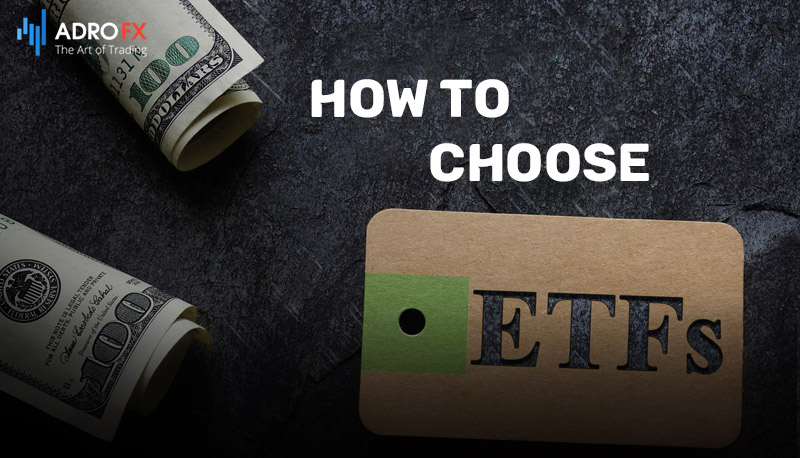
How to Choose an ETF
First of all, you need to be clear about the investment goals you are trying to achieve. Are you planning to use an ETF to build a portfolio of stocks or bonds? Or are you trying to diversify your stock and bond portfolio, and therefore looking for other asset classes such as real estate, commodities, or strategy-driven funds? Or have you already built your core portfolio and now want to invest some of your capital in sectors with higher risk or growth potential?
The general recommendation to an investor when choosing an ETF is to choose a market and sector that they find interesting, that they understand well, and for which they have expert forecasts.
But it can also happen that the situation in the economy is unstable and there are prerequisites that even a familiar market will be stormy. In that case, it is wise to choose an ETF for a stable asset - gold.
Most ETFs are index ETFs, meaning they are an instrument for long-term investing. Trading ETFs for the short and medium term makes no sense. Other instruments, such as index futures, are suitable for this purpose. Or so-called leveraged ETFs, which, although tied to an index, are traded on borrowed funds, increasing both potential gains and potential losses.
In addition, it's worth looking at those index funds that are already in demand. The top five most popular ETFs are as follows:
- SPDR S&P 500;
- Invesco QQQ Trust;
- iShares MSCI EAFE;
- iShares Russell 2000;
- Technology Select Sector SPDR.
Conclusion
ETFs are considered an easy way to invest because there is no need to compile a portfolio of securities yourself. However, one should not hope that ETFs are the golden key to risk-free income with a passive approach to investing. While one can largely only hope for luck when choosing the right market segment, doing your homework to select an effective fund with quality active management and low commissions is likely to will help improve the bottom line and outperform ETFs over the long haul.
About AdroFx
Established in 2018, AdroFx is known for its high technology and its ability to deliver high-quality brokerage services in more than 200 countries around the world. AdroFx makes every effort to keep its customers satisfied and to meet all the trading needs of any trader. With the five types of trading accounts, we have all it takes to fit any traders` needs and styles. The company provides access to 115+ trading instruments, including currencies, metals, stocks, and cryptocurrencies, which make it possible to make the most out of trading on the financial markets. Considering all the above, AdroFx is the perfect variant for anyone who doesn't settle for less than the best.
